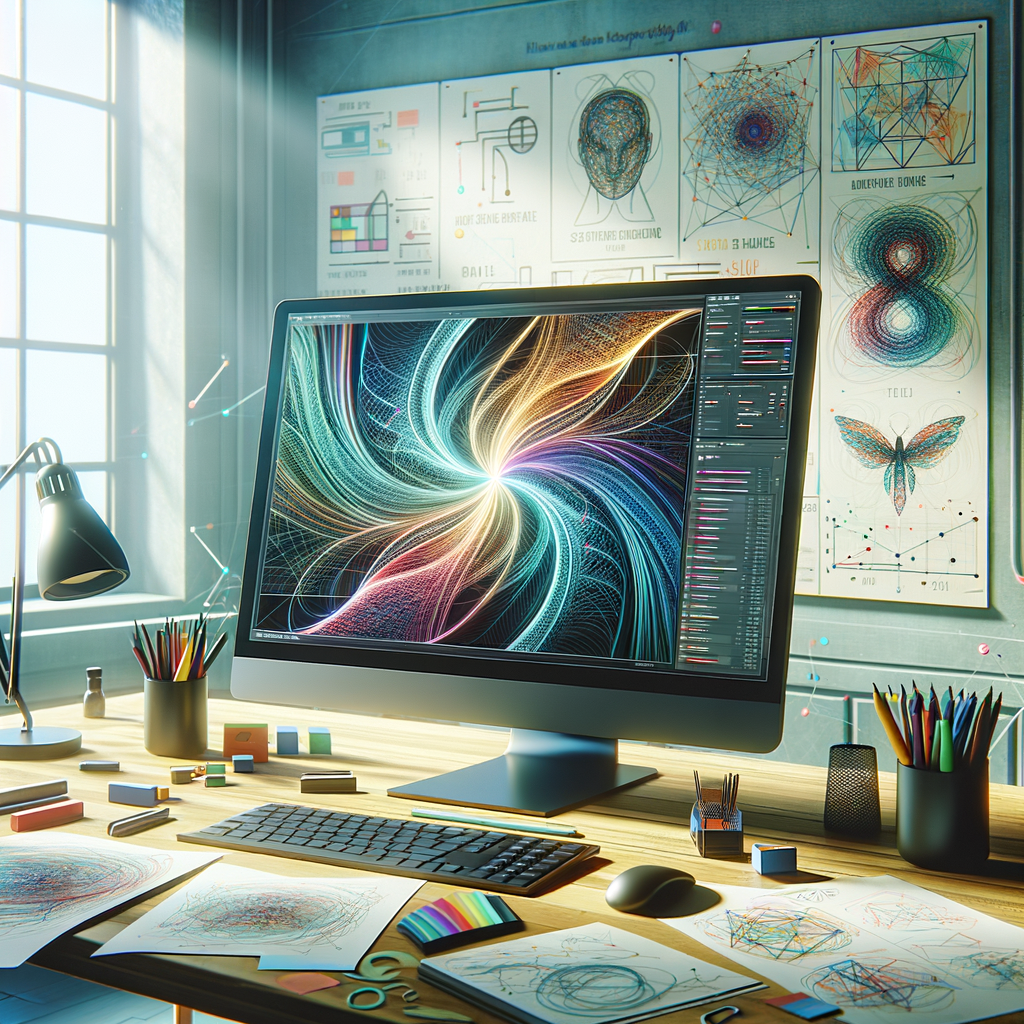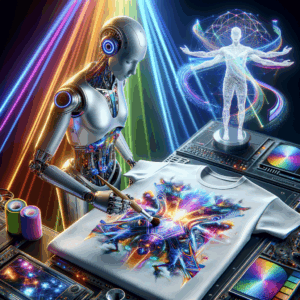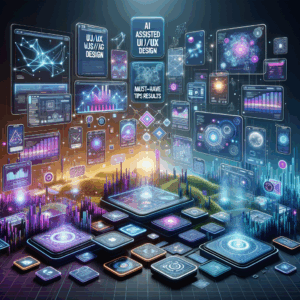
Prompting AI For Stunning Vector Graphics: The Best Guide
- Understanding Vector Graphics
- How AI Helps in Graphic Design
- Crafting the Perfect Prompt for AI
- Tools and Software for AI-Generated Vector Graphics
- Types of Vector Graphics You Can Create with AI
- Logos
- Illustrations
- Icons
- Infographics
- Best Practices for Using AI in Vector Graphics
- The Role of AI in Collaborating with Designers
- Case Studies: Successful Use of AI in Vector Graphics
- Future Trends in AI for Vector Graphics
- Enhanced Personalization
- Improved Learning Algorithms
- Integration with Augmented Reality (AR)
- Greater Accessibility
- Frequently Asked Questions
- 1. What are vector graphics?
- 2. How can I generate vector graphics using AI?
- 3. What are some popular AI tools for vector graphics?
- 4. How do I create effective AI prompts?
- 5. Can AI replace graphic designers?
- 6. What types of vector graphics can AI create?
- 7. How do I ensure quality in AI-generated designs?
- 8. Will AI in design evolve in the future?
- 9. How can I combine AI with traditional design methods?
- 10. What should I look for in an AI design tool?
- References
Understanding Vector Graphics
Vector graphics are a style of image that artists commonly use in digital design. They are composed of paths, rather than pixels. Each path has a defined start and endpoint, along with other points, curves, and angles. This allows vector graphics to scale infinitely without losing quality. Because of this unique feature, they are ideal for logos, illustrations, and any design element requiring resizing.
One essential aspect of vector graphics is the software used to create them. Programs like Adobe Illustrator, CorelDRAW, and Inkscape lead the industry. However, prompting AI for stunning vector graphics is gaining traction. With the right commands, AI can create high-quality images quickly, making the design process more efficient.
The key advantage of AI-generated vector graphics is speed. Designers can receive instant results, allowing for quick iterations. Additionally, AI can offer a variety of styles and formats, enabling artists to explore mixed media approaches. This adaptability allows for creativity while still delivering professional-grade artwork.
How AI Helps in Graphic Design
AI dramatically transforms graphic design. By automating repetitive tasks, it frees up time for creativity. Designers can focus on high-level concepts while AI handles routine elements like color matching or layout design. Furthermore, AI tools use data to predict trends, helping artists stay ahead of the game.
In terms of vector graphics, AI can generate initial designs based on user prompts. For example, you can request a logo with specific details, and AI offers multiple options. This not only saves time but also reveals design elements you might not have considered.
Additionally, AI can assist in refining designs. By suggesting edits or variations, it helps improve aesthetics and functionality. This leads to more polished work in less time, allowing designers to meet client expectations effectively and efficiently.
Crafting the Perfect Prompt for AI
Crafting a precise prompt is vital when working with AI. Start with clarity: define what you want in simple terms. Are you looking for a sleek logo or an intricate illustration? The more specific your request, the better the results.
Then, include key elements. Consider the colors, shapes, and text you want in the design. Use adjectives that evoke emotion or style. For example, instead of just saying “logo,” you might say “modern and minimalist logo with a blue color palette.” This detailed approach gives AI a clearer direction.
Finally, be open to experiments. Don’t hesitate to tweak your prompts. Sometimes, minor adjustments lead to remarkable breakthroughs. Keep reiterating your words until you achieve something exceptional. Remember, the interaction between you and the AI is a dynamic process.
Tools and Software for AI-Generated Vector Graphics
Several AI tools simplify the process of creating vector graphics. Below, find a list of popular ones along with their features:
| Tool | Features |
|———————|——————————————————–|
| Adobe Illustrator | Offers AI and machine learning for smart design suggestions. |
| Canva | Provides templates and AI-driven element recommendations. |
| DeepArt | Turns photos into artistic vector graphics. |
| Runway ML | Utilizes machine learning to generate unique graphics. |
| Vectr | A free tool that offers real-time collaboration for vector design. |
Each tool has its strengths, making it crucial to select one that aligns with your needs. If you’re a beginner, tools with user-friendly interfaces like Canva may be best. On the other hand, Adobe Illustrator provides advanced features for professional designers.
Using these tools effectively enhances the quality of your creations and saves time during the design process. Understanding which tool suits your project can fundamentally change the outcome of your designs.
Types of Vector Graphics You Can Create with AI
AI technology enables you to create various types of vector graphics. Here’s a look at some popular categories:
Logos
Logos are vital for branding. AI can generate unique logo concepts based on your specifications. By combining geometric shapes, colors, and textual elements, AI delivers diverse options.
Illustrations
Custom illustrations can make your project stand out. Whether it’s for books, websites, or merchandise, AI can produce stylistic graphics that capture the viewer’s attention.
Icons
Creating icons can be a tedious task. However, AI simplifies this by offering numerous designs based on cultural trends and user needs. This is helpful when developing apps or websites.
Infographics
Visual data representation is essential in today’s information age. AI can help create infographics that clearly communicate data while ensuring they are visually appealing.
By knowing the types of vector graphics you can create, you can leverage AI to its fullest potential. It breaks down barriers and invites creativity into your projects.
Best Practices for Using AI in Vector Graphics
Using AI effectively requires some best practices. Here are essential guidelines to keep in mind:
1. Be Specific: Clear prompts yield better results. Focus on what you want, such as style and color.
2. Iterate: Don’t shy away from modifying your prompts. New ideas often emerge from slight changes.
3. Focus on Quality: Always review AI outputs for quality assurance. Ensure they meet your standards before implementation.
4. Combine Techniques: Use AI in conjunction with traditional design methods. This harmonious approach can boost creativity and quality.
5. Stay Updated: AI technology evolves continually. Keep abreast of new features or tools that could enhance your designs.
By following these best practices, you can maximize your use of AI in vector graphics. This proactive approach leads to better designs and improves efficiency in your workflow.
The Role of AI in Collaborating with Designers
When AI and designers collaborate, the results can be spectacular. AI serves as a valuable tool rather than a replacement. It amplifies human creativity, allowing for innovative designs.
Imagine brainstorming with an AI that offers numerous design possibilities. You can merge your artistic flair with AI-generated concepts. This collaboration often leads to unique outcomes that combine both human and machine creativity.
Furthermore, AI can assist in gathering feedback. Use it to analyze user reactions to designs and make necessary tweaks. This effective loop of creation and evaluation ensures that the end product resonates with the audience.
Case Studies: Successful Use of AI in Vector Graphics
1. Branding Campaign for Eco-Friendly Products: A company in the sustainable sector utilized AI to create logos and packaging designs. By using AI-generated concepts, they quickly tested different approaches. The result was a cohesive visual identity that engaged environmentally conscious customers.
2. Children’s Book Illustrations: An author collaborated with AI to design vibrant illustrations for their book. The author provided prompts, and the AI generated whimsical designs that appealed to children. The combination of AI creativity and human storytelling made the book a hit.
These case studies illustrate the practical application of AI in vector graphics. They prove that when people and machines work together, the sky’s the limit.
Future Trends in AI for Vector Graphics
The future of AI in vector graphics looks promising. Several trends are emerging that may reshape the industry:
Enhanced Personalization
AI will soon offer even more tailored designs, understanding user preferences beyond mere colors and styles. This will allow for unique outputs catered to individual brands or projects.
Improved Learning Algorithms
As AI learns from past projects, it will become more adept. Expect refined capabilities in generating complex designs and better understanding user intent.
Integration with Augmented Reality (AR)
AI’s role in AR is set to grow. Imagine using your mobile device to interact with AI-generated graphics in real-time, allowing for immersive experiences.
Greater Accessibility
AI tools will become more accessible to laypeople. With intuitive designs, more individuals will harness the power of AI in their creative endeavors.
Keeping an eye on these trends will help you stay competitive. Embracing these advancements can unlock new creative avenues and resources.
Frequently Asked Questions
1. What are vector graphics?
Vector graphics are images created using paths instead of pixels, allowing them to be scaled without losing quality.
2. How can I generate vector graphics using AI?
You can use various AI tools and software that accept design prompts to create vector graphics quickly.
3. What are some popular AI tools for vector graphics?
Popular tools include Adobe Illustrator, Canva, DeepArt, and Runway ML.
4. How do I create effective AI prompts?
Be clear, specific, and include essential elements such as colors and styles in your prompts.
5. Can AI replace graphic designers?
AI serves as a tool for designers, enhancing their creativity rather than replacing them.
6. What types of vector graphics can AI create?
AI can generate logos, illustrations, icons, and infographics.
7. How do I ensure quality in AI-generated designs?
Always review and edit AI outputs to ensure they meet your standards before implementation.
8. Will AI in design evolve in the future?
Yes, advancements in learning algorithms and technology will enhance AI’s capabilities in graphic design.
9. How can I combine AI with traditional design methods?
You can use AI for initial concepts and then refine those designs using traditional methods.
10. What should I look for in an AI design tool?
Consider user-friendliness, feature sets, and compatibility with your design needs when choosing an AI tool.
By leveraging AI for stunning vector graphics, creatives can elevate their designs beyond standard capabilities. Embracing these tools sparks fresh ideas and offers efficiency. As this technology continues to develop, keep your creativity flowing and let AI enrich your artistry.
References
– Adobe Illustrator
– Canva
– DeepArt
– Runway ML
– Vectr

